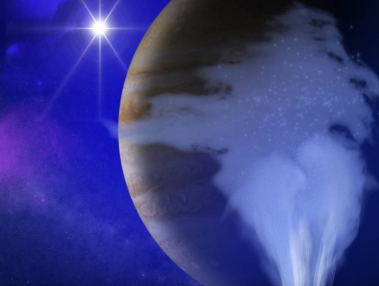
Image Courtesy of Nasa at https://www.nasa.gov
The only truth of which we can be certain with regard to life in the universe is that Earth is surely abundant with it. Life can adapt and thrive in many harsh environments from hot geysers to the sun deprived locations deep within our oceans. Common to the existence of life at least as we know it, is a requirement which is that of water…the life-blood of the universe…the vehicle by which organic molecules combine, through which life forms move and nutrients are absorbed.
Beyond Earth, the closest world to us, The Moon, has water and it is thought, a lot of it. The water on the surface is enclosed in volcanic glass beads formed billions of years ago when magma erupted from the Moon’s interior. Was some of it brought by comets or asteroid bombardment …possibly but this is only one source. The water in this encapsulated form can be found throughout the lunar surface. The quantity of water on the lunar surface in this captured volcanic form is estimated to be about 1 quart per cubic meter. The water bearing volcanic beads imply that this water originated from deep within the the interior of the Moon. Water in the form of ice has been found by Nasa radar by an Indian Moon probe. It found evidence of 600 million metric tons of actual water ice spread out on the bottom of the craters at the north lunar pole. Trace amounts of water molecules have also been found above the moon’s surface as well. Nasa found using Nasa Lunar Reconnaissance Orbiter data that the coldest places near the moon’s south pole are the brightest places which might indicate surface frost. All of this data goes a long way in implying that the moon may have had an atmosphere of its own at one time.
In our solar system there are several worlds that are thought to contain water as ice or water vapour such as Jupiter, Saturn, Uranus and Neptune. Mercury shows signs of iced over craters and as discovered by Nasa’s Curiosity Mars Rover, an ancient martian riverbed indicates that once water flowed on it surface.
Europa, Calisto and Ganymede, Jupiter’s moons, show strong evidence of liquid water below their surface as well as essential chemicals to sustain life. In fact Ganymede is thought to have a salt water ocean. Saturn’s moon Europa and Enceladus have not only liquid water but the other factors thought essential for life to exist…essential chemical elements and energy sources.
With the study of exoplanets, the Kepler data confirm the planets about the size of our earth could be entirely covered in water. The Tess mission upcoming will search such exoplanets and the James Webb Space telescope will examine their atmospheres.
Regarding our Moon the question arises…what amount of water could be lurking below its surface and in what form…the answer is a lot and in the form of liquid water quite possibly as in the case of Enceladus for instance, where active geysers spraying water ice particles and water vapor from below its surface give testament to water a plentiful beyond our Earth.
No wonder why Nasa has planned sometime in 2020 to revisit our nearest neighbour. The lunar south pole will be of special interest because the south pole is unique in that sunlight does not reach the botton of the craters which act as permanent cold traps that could reveal a fossil record of the early solar system. Nasa’s Lunar Ice Drill will bore the south pole for analysis during this lunar revisit.
Acquiring the technology to harvest water on the moon and elsewhere will be a crucial step to accomplishing the future goals of Nasa. Its task will be to lay the framework of a moon orbiting space station that will later be serviceable in future interplanetary exploration. As Early as 2033 scientists invision a manned space flight to Mars as a direct result of Nasa’s Orion Program to come.
Further Reading: Brown University
Researchers create first global map of water in Moon’s soil
Sept 13,2017